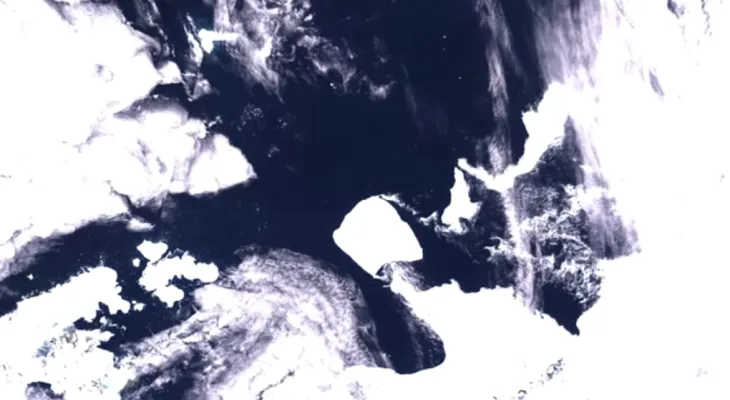Search here
Newspaper
Search here

Arab Canada News
News

Published: November 24, 2023
Scientists said on Friday that the world's largest iceberg is moving for the first time in more than three decades.
The iceberg in Antarctica called A23a, which covers an area of about 4000 square kilometers (1500 square miles), is nearly three times the size of New York City.
Since the breakup of the Filchner-Ronne Ice Shelf in West Antarctica in 1986, the iceberg – which previously hosted a Soviet research station – has largely been stranded after its base became stuck on the Weddell Sea floor.
Recent satellite images reveal that the iceberg, weighing nearly a trillion metric tons, is now drifting rapidly past the northern tip of the Antarctic Peninsula, aided by strong winds and currents.
Oliver Marsh, a glaciologist at the British Antarctic Survey, said it is rare to see an iceberg of this size moving, so scientists will closely monitor its path.
As it gains more momentum, the massive iceberg is likely to be released into the Antarctic Circumpolar Current, which will guide it toward the Southern Ocean along a route known as the "ice berg alley" where other similar objects can be found swaying in the dark waters.
Marsh added, "Over time, it probably became a bit weaker and gained some extra buoyancy that allowed it to rise off the ocean floor and be pushed by ocean currents."
A23a is also among the oldest icebergs in the world.
It is possible that A23a may become grounded again at South Georgia Island. This would pose a problem for Antarctic wildlife, where millions of seals, penguins, and seabirds breed on the island and feed in the surrounding waters, and the behemoth A23a could cut off this access.
In 2020, another giant iceberg, A68, raised concerns of colliding with South Georgia, leading to the crushing of marine life on the seabed and cutting off access to food; such a disaster was ultimately avoided when the iceberg broke into smaller pieces – a possible endgame for A23a as well.
But Marsh said, "An iceberg of this size has the potential to survive for a long time in the Southern Ocean, despite it being warmer, and could make its way north toward South Africa where it could disrupt shipping."
Comments